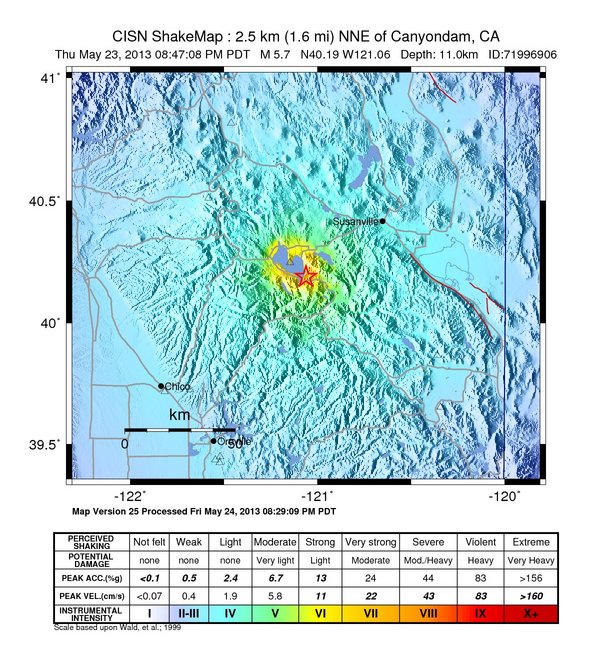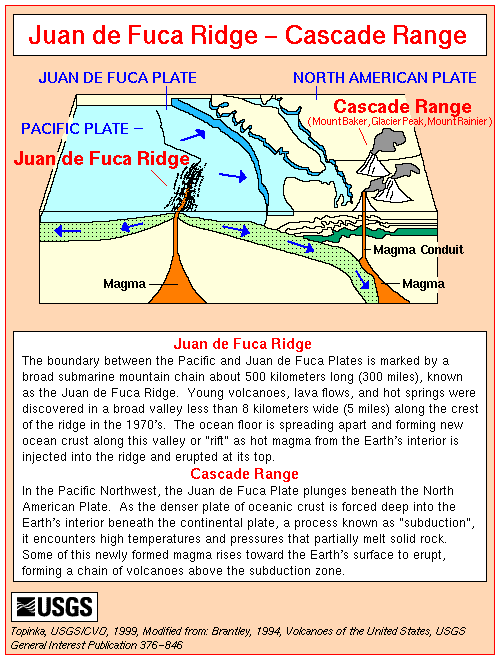A 5.7 earthquake struck Greenville, California late Thursday night, May 23, 2013, but the quake didn’t stop there.
The Greenville area experienced 62 quakes following the 5.7 rumbler, with the largest quake a 4.9 magnitude.
The initial earthquake was felt in downtown Sacramento, about 145 miles south of the quake’s epicenter.
Juan de Fuca
The next day on May 25, 2013, more earthquakes occurred off the coast of Oregon (4.0) and in Coldfoot, Alaska (4.4).
The Juan de Fuca Plate is one of the most active, and dangerous, crustal plates on our planet, and it is an area to carefully monitor for both upcoming earthquakes and volcanoes.
In the Pacific Northwest, the Juan de Fuca Plate plunges under North America. As the denser ocean crust is forced deep into the Earth’s interior beneath the continental plate at the USA’s West Coast (a process known as “subduction”), it encounters high temperatures and pressures that partially melt the rock. Some of this newly formed magma rises toward the Earth’s surface to erupt, forming a chain of volcanoes above the subduction zone.
Between the Pacific and Juan de Fuca Plates is a broad, submarine mountain chain about 500 kilometers long (300 miles) known as the Juan de Fuca Ridge.
The Juan de Fuca Plate will continue to dive beneath Oregon and the High Cascades, so keep an eye on activity coming from the Juan de Fuca.


